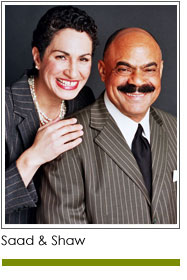 Summer reading is highlighted in Oprah and other magazines each year. A good read is great to enjoy on the beach or curled up on a lawn chair. But what about a good summer write? That’s right –start writing now to help the money come in at the end of the year, or perhaps next spring. That’s how it’s done. Writing proposals now prevents future complaints such as “how can I write that proposal in just three days?” It’s called planning ahead.
Summer reading is highlighted in Oprah and other magazines each year. A good read is great to enjoy on the beach or curled up on a lawn chair. But what about a good summer write? That’s right –start writing now to help the money come in at the end of the year, or perhaps next spring. That’s how it’s done. Writing proposals now prevents future complaints such as “how can I write that proposal in just three days?” It’s called planning ahead.
Here are six things you should know before writing a proposal.
1. What type of funding are you seeking? Do you want a grant for a specific program, general operating support, equipment purchases, an advocacy campaign, or for a building (capital project)? Most organizations are looking for funds for multiple projects at the same time. For example, unrestricted or general operating funds are most coveted as they provide an organization with the greatest flexibility. But many foundations now seek to focus their giving more narrowly, and while they may want to support your afterschool health program, they may not be willing to fund outreach that helps ensure you reach the target group of children you want to engage.
2. How much money do you need to raise in total? How much do you expect to raise from foundations? Corporations? Government sources? Individual donors? Many funders want to see a diversity of projected revenue and they look for it in your proposed budget.
3. What is your projected impact? What will be different if your organization secures the funds it is seeking? Be specific.
4. What types of written materials do you have that can help inform the proposal writing process? Ideally you have a case for support that you can draw from. If not, you will need access to your mission statement, vision statement, organizational description, program description, projected evaluation method, impact and – again – budget.
5. Where could the money come from? You can begin your funding research using The Foundation Center’s online resources (fconline.fdncenter.org/ ). You can pay a small fee for access from your computer, or you may be able to use the database at your library as many libraries subscribe providing you with free access. When you identify a potential funder, review their guidelines closely before you begin writing. Make sure that your project and organization meet the funder’s requirements.
6. Review the required attachments. Make a list of what you will need to provide. This often includes your 501c3 letter, audited financials, an organizational budget, a project budget, board list with affiliations, and sometimes a list of other projected funders for the project. The attachments alone can launch a mini-crisis if you try to pull these together two hours before the proposal is due.
Start now, and reduce future stress.
Copyright 2015– Mel and Pearl Shaw
Mel and Pearl Shaw position nonprofits, colleges and universities for fundraising success. For help with your fundraising visit www.saadandshaw.com or call (901) 522-8727.












